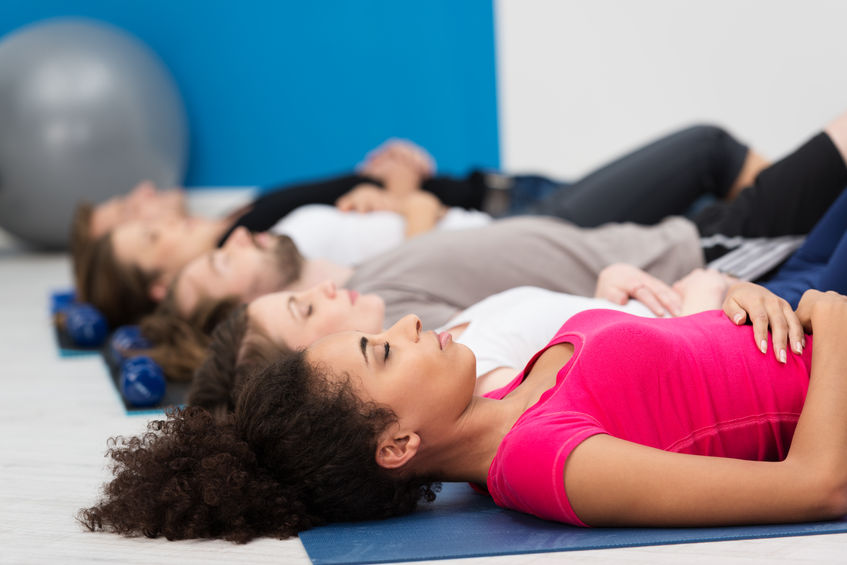Squeeze Your Bandhas!
#withDavida
Engage your core and bandhas! You may hear this command from instructors or trainers. Why? What does it really mean? Squeeze your tummy? Tighten your butt? Well, partly.
Your core includes way more than your abdominal and back muscles. It pretty much includes everything but muscles in your arms and legs as it acts as a stabilizer for your movements. By “engaging” these muscles you put your body in a solid and strong position to transfer force. You make yourself more stable by contracting the various muscles in the trunk of your body including the abs, back but also pelvis, shoulders and more.
Without a strong or engaged core it’s hard to perform exercises and even daily movements and not cause harm or throw the body out of alignment. Without a contracted core a squat might put too much pressure on your lower back or knees and you might as well fall into a chair instead of attempting to sit.
I’ve been contemplating this more as I try to keep my arthritic back strong and mobile. I’ve written before how yoga has helped ease my back pain tremendously. Yoga requires a strong core, especially to perform the many chataranguas and downward dog positions. There’s another more subtle set of core muscles we are urged to engage in yoga called the bandhas.

Strengthen Your Bandhas!
Bandhas is Sanskrit for body locks.
- There are three referred to in yoga.
- The Mula , which is lifting the perineum (the pelvic floor muscle).
- The Uddiyana bandha refers to contracting the abdomen and the Jalandhara bandha refers to contracting muscles in the throat.
- Yoga encourages contracting these locks to channel energy through the body.
- It can also help stabilize your body so you can flow into yoga postures more easily.
For twenty years I have been encouraging exercise participants to engage their core for exercise by instructing them to slightly squeeze their butt, push their navel in, lift the chest and roll the shoulders back… etc. Now in yoga I have realized a deeper engagement of the core by focusing on the pelvic and abdominal bandhas.
By lifting the Mula bandhaor pelvic floor muscle, yoga teaches us we are locking the root of the spine and moving energy upward.
It’s a real challenge to keep the perineum muscle, between the anus and genitals, contracted during you entire hour of yoga. By doing so you can feel a lifting internally or a subtle engagement of your core and it’s said to make lifting the body and jumping easier (I am still experimenting). Another benefit to employing these muscles is strengthening the area around the urethra, which can help with incontinence.
It seems easier to me and I have noticed a greater difference when contracting the Uddiyana Bandha or the abdomen muscles.
This action transcends yoga into the exercise room. In fitness we tell everyone to contract the back, abs and shoulders as mentioned above. In yoga there is a more internal coaching to engage these muscles by using breathe. To enact this bandha you squeeze your abdomen muscles in and up at the bottom of a complete exhalation. You’re basically compressing all of the air out of your diaphragm, literally trying to touch your spine with your bellybutton. When you do this you can definitely feel a lengthening in the spine and a strong center. Forget the sit-ups. This is a wonderful way to work to a six-pack set of abs. Another benefit yogis site, is massaging thea intestines, easing digestive ailments and pushing the flow of energy upwards.
So how does an average mortal use these techniques to enhance their life?
Modern research has found a constant slight engagement of the core muscle is enough to brace the spine for movement and heavy loads. I personally have found identifying and contracting these lower bandhas to increase the strength and support of the back. Now when exercising or executing lower back maneuvers I am very mindful of my breath and movement externally as well as internally. I have especially found it helpful when I squeeze the heck out of my bandhas while lifting or doing movements stressful to my lower back.
If you are like me looking for relief from backaches and pains look for an instructor who can coach you through using your bandhas. But also try it if you’re looking to improve your yoga practice, breathing technique or overall physical performance. Always discuss exercise with your doctor.
Resources:
What is the core: https://breakingmuscle.com/mobility-recovery/do-you-know-what-your-core-really-is-and-what-it-does











